- News
- Reviews
- Bikes
- Components
- Bar tape & grips
- Bottom brackets
- Brake & gear cables
- Brake & STI levers
- Brake pads & spares
- Brakes
- Cassettes & freewheels
- Chains
- Chainsets & chainrings
- Derailleurs - front
- Derailleurs - rear
- Forks
- Gear levers & shifters
- Groupsets
- Handlebars & extensions
- Headsets
- Hubs
- Inner tubes
- Pedals
- Quick releases & skewers
- Saddles
- Seatposts
- Stems
- Wheels
- Tyres
- Tubeless valves
- Accessories
- Accessories - misc
- Computer mounts
- Bags
- Bar ends
- Bike bags & cases
- Bottle cages
- Bottles
- Cameras
- Car racks
- Child seats
- Computers
- Glasses
- GPS units
- Helmets
- Lights - front
- Lights - rear
- Lights - sets
- Locks
- Mirrors
- Mudguards
- Racks
- Pumps & CO2 inflators
- Puncture kits
- Reflectives
- Smart watches
- Stands and racks
- Trailers
- Clothing
- Health, fitness and nutrition
- Tools and workshop
- Miscellaneous
- Buyers Guides
- Features
- Forum
- Recommends
- Podcast
review
£170.00
VERDICT:
Sturdily-built urban bag with lots of padding; tough and comfortable
Weight:
1,660g
Contact:
www.vamperformance.com
At road.cc every product is thoroughly tested for as long as it takes to get a proper insight into how well it works. Our reviewers are experienced cyclists that we trust to be objective. While we strive to ensure that opinions expressed are backed up by facts, reviews are by their nature an informed opinion, not a definitive verdict. We don't intentionally try to break anything (except locks) but we do try to look for weak points in any design. The overall score is not just an average of the other scores: it reflects both a product's function and value – with value determined by how a product compares with items of similar spec, quality, and price.
What the road.cc scores meanGood scores are more common than bad, because fortunately good products are more common than bad.
- Exceptional
- Excellent
- Very Good
- Good
- Quite good
- Average
- Not so good
- Poor
- Bad
- Appalling
The Inside Line Default bag is a thoroughly thought-out rucksack that's more than just a commuter bag. It's built like a brick shithouse, big enough to pick up a couple days' shopping on the way home and comfortable even when loaded to the gunwales.
'Default' is a slightly odd name for a bag. Inside Line Equipment explains: 'Put on a coat, grab your keys, wallet and some beats. Put your books, notebook, lunch and bottle in your pack. This is your default bag.' And hence the name. One bag to rule them all, if you're feeling Tolkeinesque.

Let's deal with the elephant in the room first: £170 is a hell of a lot of money for a rucksack. This is the sort of price you'd pay for a large, super-comfy bag intended to get you up and down a mountain with all your gear. £170 for a cycling backpack: someone's having a laugh, surely?
Not so (and don't call me Shirley). When you look at hiking rucksacks in this price range, you're usually paying for light, strong materials and clever design with carefully positioned padding and lots of adjustability. With the Default, you're paying instead for heavy, tough materials, useful detailing and bombproof construction. This bag looks like you could use it to shelter from small-arms fire.
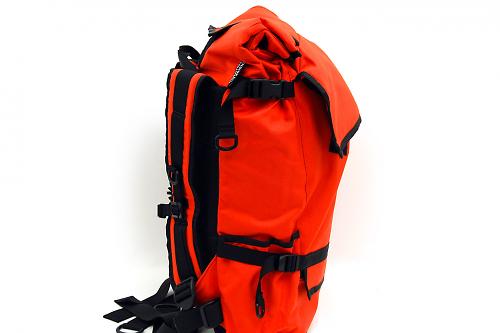
This is the kind of build quality you find in bags used all day, every day by professional couriers who need a bag to be reliable; ordinary mortals can probably expect to pass this bag down to their children. Looked at that way, £170 is still a lot of money, but it's not unreasonable for the quality and likely longevity.
The Default has a nominal capacity of 25 litres, but it seems much bigger than that because it closes with a roll-top and press-studs that allow you to stuff it well past its stated capacity.
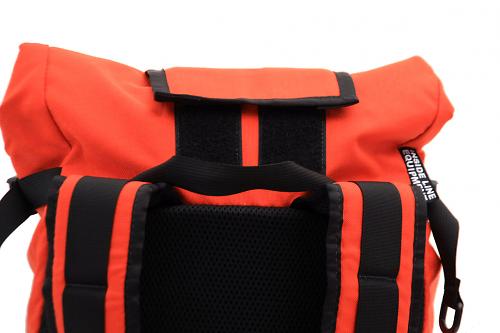
As well as the large main compartment there are two bottle-sized side pockets, an outer pocket big enough for a 15in laptop, two outer-outer pockets with internal sub-pockets for pens and the like, a huge document pocket with a waterproof zip, and another smaller waterproof pocket on the outside bottom of the bag.
There are probably sections to the Default that I haven't found yet. I kept stumbling delightedly across them in the first few days I used it. 'Ooh there's a pocket in this flap.' 'Aha! That's a handy place for a phone.' Yes, yes, I'm easily amused.

This afternoon, I rode home with the Default carrying a kilo of coffee beans, six pints of milk, half a dozen bananas, a kilo of grapes and a few lighter groceries. I wouldn't want to ride 50 miles with all that on my back, but for the short trip from the shops it was plenty bearable thanks to the Default's thick shoulder straps and well-padded back. You know the weight's there, but you don't mind it. As you'd expect with any bag this size, there's a sternum strap to pull the shoulder straps together too, making the bag a lot more stable.
Comfort and stability are great, but Inside Line Equipment hasn't worried much about ventilation. There are no channels in the padding to help stop your back getting sweaty. You won't get a can of baked beans poking into your ribs, but you will get a bit damp if you ride hard in the Default.

If you haven't massively loaded up your Default, then there are a compression straps to keep it under control, and like the shoulder straps they have nice big D-rings on them for easy grabbing and yanking.
You can get the Default in a wide range of colours: black, dark grey, light grey, red, olive, navy, sky blue, cyan, woodland camo, BMW Motorsport, and black with clear window. I'm rather taken with the cheerful orangey-red of our test sample.

I like this bag a lot. If you need lots of capacity and want a bag that'll last and last, you could do much worse.
Verdict
Sturdily-built urban bag with lots of padding; tough and comfortable.
road.cc test report
Make and model: Inside Line Equipment Default bag
Size tested: 25 Litre
Tell us what the product is for, and who it's aimed at. What do the manufacturers say about it? How does that compare to your own feelings about it?
The user Inside Line Equipment has in mind looks to be a short-distance commuter, young professionals and students. The styling's very urban, especially in the darker colours, and the maximum-durability vibe of the construction says it's expected to cop some abuse.
Inside Line Equipment says:
"Put on a coat, grab your keys, wallet and some beats. Put your books, notebook, lunch and bottle in your pack. This is your default bag. With room for a grocery mission, extra clothing, and protection from the rain, this is our flagship bag, designed for everyday use, and constructed using the highest quality materials, this bag is comfortable for everyday use, but will also carry larger loads with ease."
Tell us some more about the technical aspects of the product?
The feature list goes like this:
Weatherproof main compartment
Weatherproof hidden sleeve fits tablet or small laptop
Middle sleeve fits 15in MacBook
Deep side pockets
Adjustable/removable sternum strap and 1.5in waist strap
Snaps keep rolltop from obstructing view
Durable 1000D Cordura outer/Waterproof Vinyl liner
Water-resistant urethane coated zippers
Thick padded back and shoulder straps
Dimensions 12inx6inx20in (25 
Handmade in California
Rate the product for quality of construction:
9/10
Hefty waterproof Cordura on the outside, thick tarp-style fabric inside, very tidily sewn and well-finished, it looks like you'll be able to hand it down to your grandchildren.
Rate the product for performance:
8/10
Great for capacity and comfort, no so lovely for for non-sweatiness of your back, but that's clearly not a design objective here.
Rate the product for durability:
10/10
No sign of wear after a few months' use, and I don't expect to see any. Experience says bags built like this (double-wall, reinforced, covered stitching) are almost impossible to kill.
Rate the product for weight, if applicable:
5/10
All that padding and super-tough fabrics adds heft. At 1640g, it's substantially heavier than, for example, an Osprey Talon 33 (920g), which is nominally bigger but actually closer in practical capacity than the numbers suggest. That's 1.7lb in old money; quite a difference.
Rate the product for comfort, if applicable:
9/10
Lots of back and shoulder padding, plus a well-positioned sternum strap to keep it under control make it comfortable to carry even when fully loaded.
Rate the product for value:
7/10
Expensive, but not unreasonably so given the quality of materials and construction.
Tell us what you particularly liked about the product
Comfort when loaded; capacity; large, handy extra pockets.
Did you enjoy using the product? Yes.
Would you consider buying the product? Yes.
Would you recommend the product to a friend? Yes.
Anything further to say about the product in conclusion?
This is a beefy, comfy bag and for performance and construction it's a 9, maybe even a 9.5 if we had such a rating. The price isn't unreasonable for the quality, but it's not cheap, and that takes it down to a solid 8.
About the tester
Age: 46 Height: 5ft 11in Weight: 85kg
I usually ride: Scapin Style My best bike is:
I've been riding for: Over 20 years I ride: Most days I would class myself as: Expert
I regularly do the following types of riding: commuting, touring, club rides, general fitness riding,
John has been writing about bikes and cycling for over 30 years since discovering that people were mug enough to pay him for it rather than expecting him to do an honest day's work.
He was heavily involved in the mountain bike boom of the late 1980s as a racer, team manager and race promoter, and that led to writing for Mountain Biking UK magazine shortly after its inception. He got the gig by phoning up the editor and telling him the magazine was rubbish and he could do better. Rather than telling him to get lost, MBUK editor Tym Manley called John’s bluff and the rest is history.
Since then he has worked on MTB Pro magazine and was editor of Maximum Mountain Bike and Australian Mountain Bike magazines, before switching to the web in 2000 to work for CyclingNews.com. Along with road.cc founder Tony Farrelly, John was on the launch team for BikeRadar.com and subsequently became editor in chief of Future Publishing’s group of cycling magazines and websites, including Cycling Plus, MBUK, What Mountain Bike and Procycling.
John has also written for Cyclist magazine, edited the BikeMagic website and was founding editor of TotalWomensCycling.com before handing over to someone far more representative of the site's main audience.
He joined road.cc in 2013. He lives in Cambridge where the lack of hills is more than made up for by the headwinds.
Latest Comments
- BikingBud 4 hours 43 min ago
Was there?...
- ChrisA 6 hours 28 min ago
Balance bike: £600 - brakes extra.
- LeadenSkies 6 hours 48 min ago
As a non local who occasionally has to cycle from St Ives to Cambridge, at a sedately average speed of 12mph, I have had to use alternative routes....
- PRSboy 10 hours 14 min ago
I have two aero bikes- an Argon18 Nitrogen and an Orro Venturi. I love the way they feel on the road. I also like the style of the deeper section...
- Rendel Harris 17 hours 51 min ago
They have here: results at 14.40. The aero bike was roughly fifteen seconds faster than a climbing bike on a descent of around 6 km, so about 3km/h...
- wtjs 18 hours 5 min ago
As I've also placed here the nutter Audi and white van drivers, I've decided to give those no-nonsense keep-the-country-moving BMW drivers a list...
- polainm 19 hours 8 min ago
100% this. Policing mentality is formed by social 'norms', and the cyclist witchhunting across social media is the UK norm. Close passing a person...
- David9694 20 hours 33 min ago
That's a clear 2 points awarded there, but I guess as there's now a 25% tariff you'll only get 1.5
- mark1a 20 hours 44 min ago
Fawkes Cycles is only local if you live near Oldham. That's nearly 300 miles away from me. Also, any retailer that doesn't participate in an...
- David9694 20 hours 46 min ago
Openreach under fire over delays to Amesbury cabinet repairs...







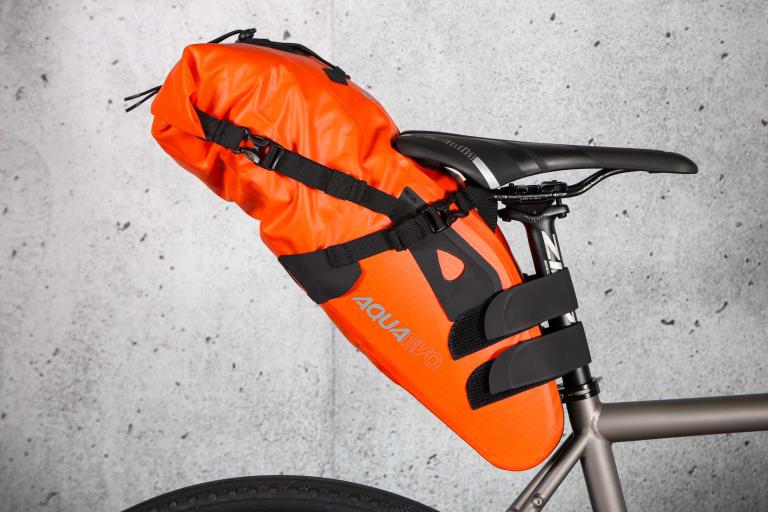
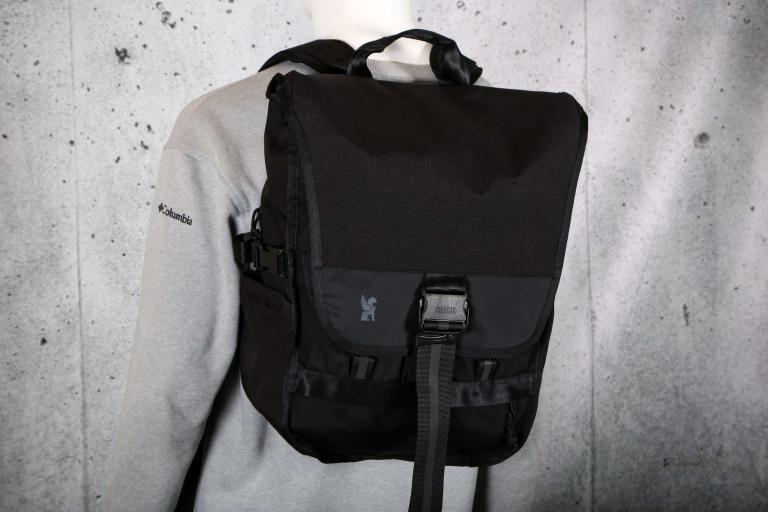
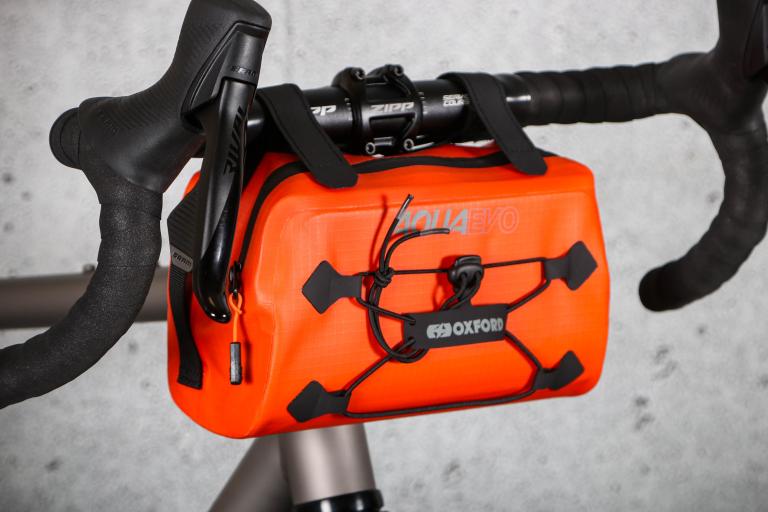
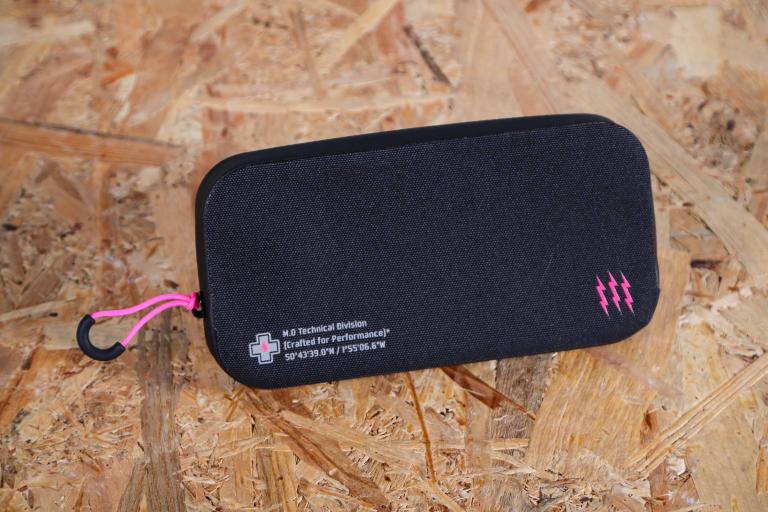
Add new comment
11 comments
1,660 grams - for a bag!
They've got to be kidding. That would double the weight of what I normally carry.
Nuts.
To bigbluebike -
We do compute those costs.
I would love to ride a UK-built bike, wearing a UK-made rucksack, carefully designed to be ideal for my type of riding. But at the minute I cannot afford to do that.
And I do not buy my kit based solely on price, having learned over the years that the old saying, "buy cheap, buy twice" has a lot of truth to it.
But I - and many others - seem to feel it's important that UK manufacturers don't stick their heads in the sand, when it comes to what else is on the market.
At the minute, I can buy - and I have done so - a waterproof commuting rucksack, not for half the price of this one, but for less than a fifth the price. I could buy FIVE if I wanted and still have change left over.
And that gets me something that's UK designed, made in China, and does the job rather well.
How, then, can I justify the pricetag, for one "made in the UK" item?
Such a shame that whenever a bag review comes on the site the thread on the comments is all about pointing out how much cheaper a mass produced bag is than one made by a smaller company.
If you are interested in different bag designs and bag manufacturers (like I am) and come to start looking into the costs involved you will quickly realise how small companies are actually quite foolish to try and compete just on cost.
For example a full days work by a UK expert on RF welding costs £500. This might get you half a prototype developed so lets say £1000 for a working prototype. Then you need to test under different conditions, under different environments, by different people to see if the product can do what it was designed to etc you get the point…..
Then you need to find a manufacturer who can produce your bag to the right spec and then the right cost. Not a cheap process and pointless because as has been noted on the site you can buy a lightweight dry bag produced in china for a fraction of the cost….Maybe those who think that manufacturers like InsideLine are ripping people off, have a read of this blogpost by GoRuck on the development of their G1 backpack yes it is $295 for a reason. http://news.goruck.com/gear-explained/building-gr1s-in-bozeman-montana/
In my opinion the lack of understanding of costs and the negativity of some individuals to compute those costs e.g. "good heavens, I can get a genuinely waterproof 20 litre sailing rucksack for a fraction of that price... a mere snip at just £35.95" means that UK manufacturers are less and less likely to keep their manufacturing base here and outsource to the far east. A loss of skills forever.
Another result of this is that the UK is actually quite poorly served by companies who manufacture things like fabrics, buckles, clips etc….(America has a very large cottage industry of people making accessories thus it is better served). Therefore, for new people to enter the marketplace it is very hard to acquire the materials needed to make great innovative products. So the long and short of it is that we should promote small independents and if the costs are too much for you to bear then please keep your opinions to yourself. Don't take that out on the manufacturer.
It says 'handmade in California' above. So what is this about being made in the UK?
The pictures should really show 'all the pockets' and functions because the photographs don't really show this 'great aspect' of the bag.
While the build maybe robust, the major flaw seems to be that it will make you sweat profusely with no venting on the back for air flow between the back and the bags impermeable covering.
If it wants to be worth £170 then the design and finish needs to be great, not good or adequate.
Good luck to them.
Suspect my definitions are a little old fashioned and date from my days as a Boy Scout (I think I still have my Chief Scouts Award somewhere - Sad, I know!).
If it's worn on the back and supported by two straps over the shoulders it's a backpack - and can be either a rucksack or a knapsack.
If it has a rigid frame either 'A' or 'H', internal or external it's a rucksack. If it has a 'soft' construction it's a knapsack. Capacity is irrelevant.
Anything either carried in the hand or over one shoulder is a bag - handbag, kitbag, messenger-bag &c.
Waist or hip-straps don't come into it as they have not always, or don't have to be fitted.
I hope this is some help. Sh*t I feel old!
Also - can levermonkey point us to the source for that etymology / definition? Genuinely interested - I say "rucksack" to mean a bag with a waist/hip strap, and "backpack" to mean one without, but maybe I'm wrong?
I'm using a £30 sailing rucksack from LOMO, and really liking it. Best bag I've had so far!
I can see that this thing might be a step up (in some ways), but why is it over £100 more expensive?
Or attach a supertough bin liner to your back with zip ties.
In all honesty.
ILE make great quality bags and are a tiny independent company, which is also good.
Echoing Paul_C's comment, here's one at £21
http://www.ewetsuits.com/acatalog/rucksack-dry-bags-rucksacks.html
Same orange, a similar looking capacity, just without the back-padding and the multiplicity of pockets. However, at a saving of almost £150, one might overlook such...
good heavens, I can get a genuinely waterproof 20 litre sailing rucksack for a fraction of that price... a mere snip at just £35.95
I can find no mention of an internal frame therefore it's a knapsack not a rucksack. No size is given (Red is not a size).
At £170 it's twice the price of the Ortlieb Messenger (£81 from Wiggle) which looks comparable in size.
Not convinced that this product justifies the investment.